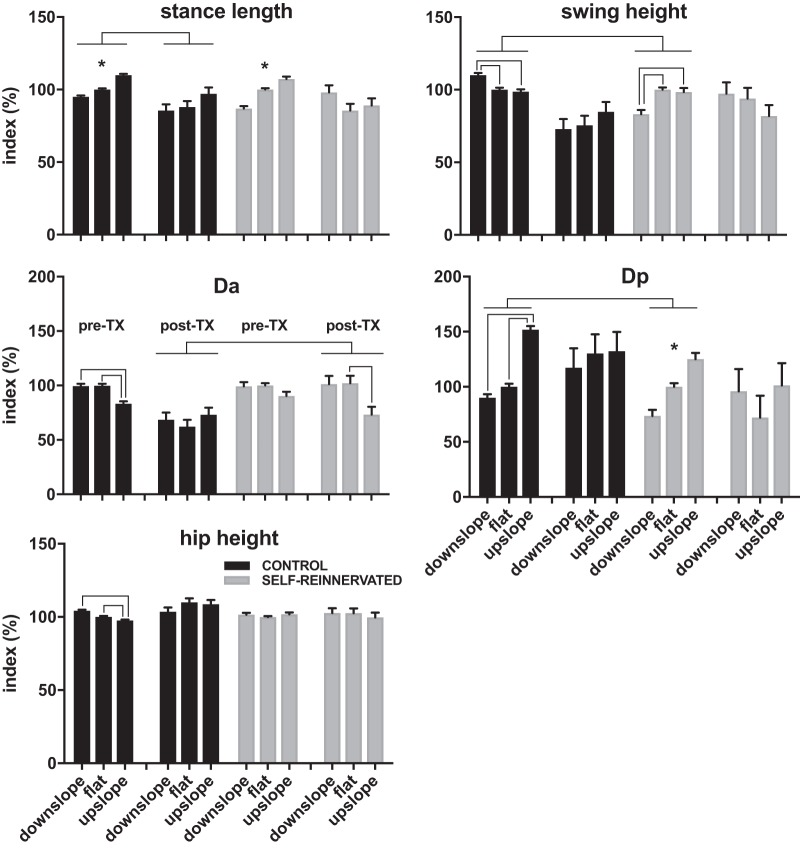Fig. 4.
Estimated marginal means ± 95% confidence intervals of the normalized stance length, swing height, anterior displacement (Da), posterior displacement (Dp), and hip height for all animals evaluated on flat and ±10° slope of walking. Full factorial linear mixed models of each of the indexes in the pre- and posttransection conditions with group and slope as factors found significant differences (no overlap in 95% confidence interval of the estimated marginal means) in swing height and Dp between the CONTROL and SELF-REINNERVATED animals pretransection, and in Da between the same two groups posttransection. Overall, the differences between CONTROL and SELF-REINNERVATED animals were small, confirming prior results in spinally intact animals showing that lateral gastrocnemius/soleus self-reinnervation has limited effects on the kinematics of locomotion even at much higher (27°) slopes (Gregor et al. 2018). Slope had a significant effect on stance length, swing height, and Dp in spinally intact animals, but not for the spinalized animals, suggesting that the adaptation to slope may be supraspinal in origin. Significant lowering of the anterior displacement between flat and upslope was the only change with grade found in spinalized animals. *Estimated marginal means do not overlap at any of the grades; lines between groups/slopes indicate no overlap in estimated marginal means between groups/slopes. Number of steps: 20 steps for each condition/slope/subject; number of subjects: 4 CONTROL at all slopes postspinalization and flat prespinalization, 3 CONTROL at ±10° slopes prespinalization, 3 SELF-REINNERVATED at all slopes postspinalization and flat prespinalization, and 2 SELF-REINNERVATED at ±10° slope prespinalization.

